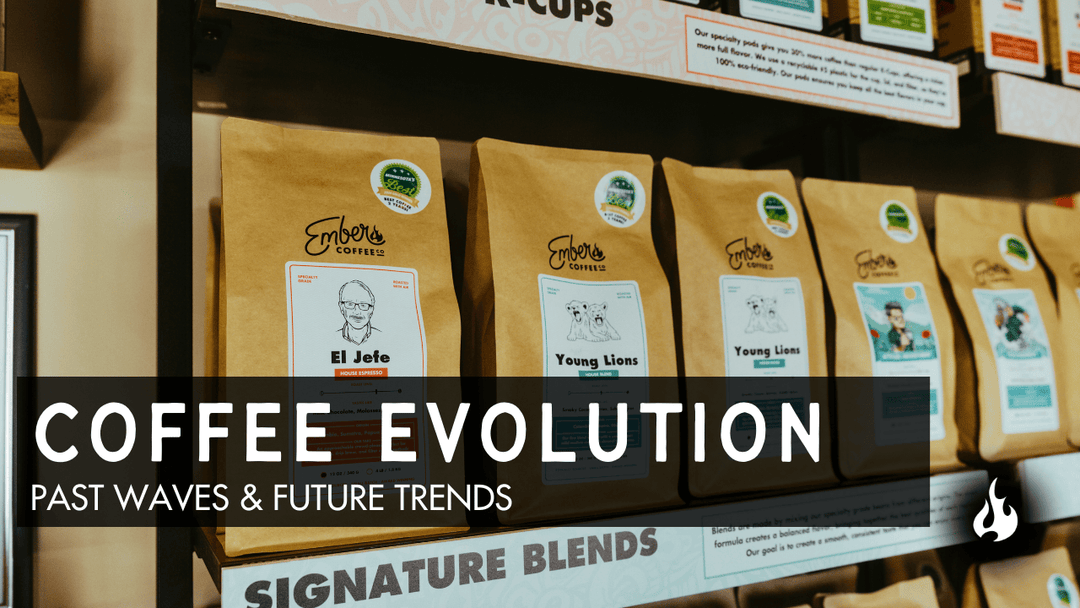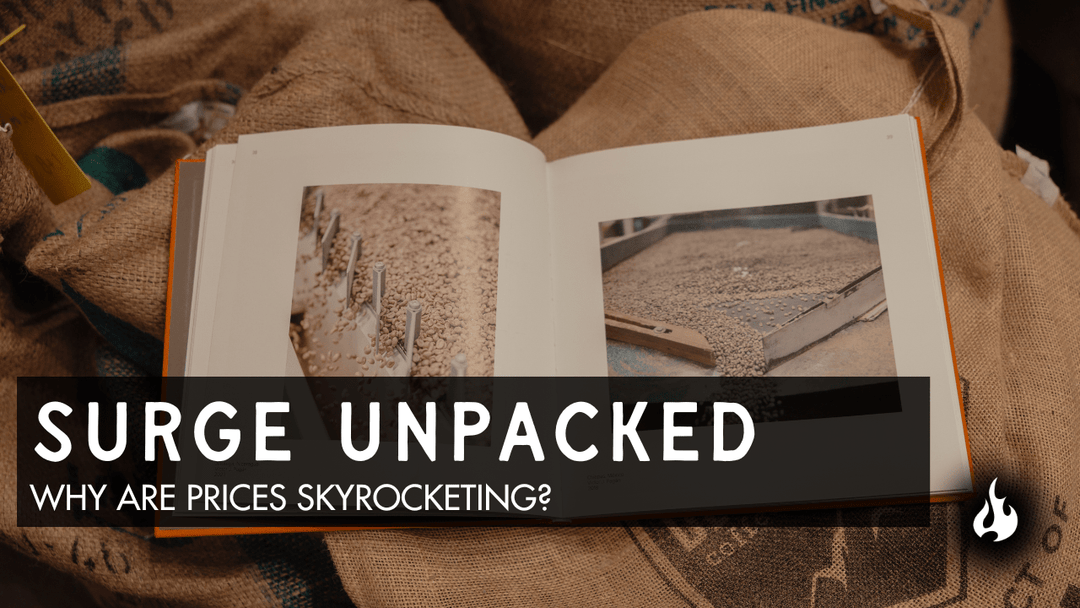What Coffee Is Good for Your Gut? A Guide to Easy, Gut-Friendly Brews
If you’ve ever taken a sip of coffee and felt your stomach twist soon after, you know that uneasy mix of love and regret. You love the smell, the ritual, the warmth in your hands first thing in the morning... but sometimes, your gut just doesn’t love coffee back. You might feel bloated. Maybe you get that sharp pinch of acid reflux. Or maybe it’s that jittery, off feeling that takes away from the comfort of the cup.
What Coffee Is Good for Your Gut? A Guide to Easy, Gut-Friendly Brews
If you’ve ever taken a sip of coffee and felt your stomach twist soon after, you know that uneasy mix of love and regret. You love the smell, the ritual, the warmth in your hands first thing in the morning... but sometimes, your gut just doesn’t love coffee back. You might feel bloated. Maybe you get that sharp pinch of acid reflux. Or maybe it’s that jittery, off feeling that takes away from the comfort of the cup.

If you’ve ever taken a sip of coffee and felt your stomach twist soon after, you know that uneasy mix of love and regret. You love the smell, the ritual, the warmth in your hands first thing in the morning... but sometimes, your gut just doesn’t love coffee back. You might feel bloated. Maybe you get that sharp pinch of acid reflux. Or maybe it’s that jittery, off feeling that takes away from the comfort of the cup.
You’re not the only one. A lot of coffee drinkers deal with stomach issues and don’t realize it’s not the coffee itself, it’s how the coffee’s grown, roasted, brewed, and even what’s added to it.
At Ember Coffee, we believe coffee should bring you energy and joy, not stomach pain. And the good news? You don’t have to give up your morning cup. You just need to know how to make it a little friendlier to your gut.
Let’s talk about what’s really going on, and how you can keep your coffee smooth, rich, and easy on your stomach.
Why Coffee Sometimes Feels Harsh
Coffee’s naturally acidic, and for some people, that acidity can irritate the stomach lining or spark acid reflux. Add caffeine to the mix, which boosts stomach acid production, and yeah, it can be a rough combo if you’re sensitive.
But that’s not the whole story. The way beans are grown, roasted, brewed, and even stored plays a big part in how your body reacts. What you stir in, sugar, milk, flavored syrups, matters too.
The trick isn’t quitting coffee. It’s being intentional about what kind you drink and how you make it.
Start with the Right Beans
Think about biting into a green apple. That sharp tang? That’s acidity. Now think about dark chocolate. Smooth, deep, balanced. Coffee works the same way.
Some beans are naturally bright and tangy. Others are mellow and round. If your stomach burns after a light roast, it’s probably reacting to that higher acidity. Low-acid coffee gives you all the flavor without the bite.
Beans from Brazil, Sumatra, and Nicaragua tend to be easier on digestion because of their growing conditions. They have that smooth, chocolatey thing going on that feels calm on your stomach.
And here’s something most people don’t realize, dark roasts are actually lower in acid than light ones. The longer roasting time breaks down the acidic compounds, leaving a deeper, richer flavor.
At Ember Coffee, we use air roasting, which circulates hot air instead of direct heat. That means the beans roast evenly, with less bitterness and a clean, balanced taste that’s naturally gentle on your gut.
So if you deal with acid reflux or heartburn, skip those bright, citrusy light roasts. Go for a medium or dark roast with chocolate, caramel, or nutty notes. Your stomach will notice the difference.

The Brewing Method Matters
Once you’ve got the right beans, how you brew them changes everything.
Cold brew’s probably your gut’s best friend. The slow, cold-water extraction pulls out sweetness and smoothness, while leaving much of the acidity behind. It’s up to 70% less acidic than hot coffee, and it naturally tastes a bit sweeter.
If you like your coffee hot, a French press is another solid choice. It keeps the natural oils in the cup, which adds body and softens any sharp edges.
Even espresso, though it tastes bold, is actually less acidic than drip coffee because it brews so fast.
But if your stomach’s sensitive, skip the light roast drip coffee. That long, hot brewing time draws out more acidic compounds. And yeah, instant coffee’s convenient, but it’s often made from cheaper, high-acid beans that can hit your stomach hard.
The takeaway? Slow, gentle methods like cold brew or French press give you a smoother cup that’s easier to love.
What You Add to Your Coffee Counts
Even if you’ve nailed the beans and the brew, the wrong add-ins can still mess with your stomach. Dairy, heavy creamers, and artificial sweeteners are common culprits.
If that sounds familiar, don’t ditch your coffee, just tweak what you’re adding.
Try oat or coconut milk instead of regular dairy. They’re lighter and easier to digest but still creamy.
Add a sprinkle of cinnamon, it’s soothing and anti-inflammatory. A drizzle of raw honey can add natural sweetness and even help your gut bacteria. Some people swear by stirring in a little collagen powder, which helps support the gut lining.
What to skip? Artificial sweeteners. They can throw off your gut bacteria and cause bloating. And those flavored syrups? Too much sugar can spike your blood sugar and leave you feeling off.
If dairy’s the problem, try a small splash of oat milk and see how your body reacts. Sometimes, that tiny change makes coffee feel completely different.

Fresh Coffee Feels Better
Here’s something people overlook, stale coffee isn’t just dull. It can actually be harsher on your stomach.
When coffee sits too long, it loses antioxidants and the natural oils that give it balance. Oxidation makes it taste bitter and sharp, and that “burnt” flavor that hits the back of your throat? That’s stale coffee talking.
Fresh coffee, on the other hand, keeps those natural compounds that make it smooth and kind to your body. So keeping it fresh matters for both taste and comfort.
Here’s how:
Always check for a roast date, not a best-by date.
Store beans in an airtight container away from moisture, light, and heat.
Grind only what you need right before brewing.
At Ember Coffee, we roast small batches so the beans reach you at their best. Fresh coffee doesn’t just taste better, it feels better, too.
Finding the Best Coffee for Your Stomach
If you’ve been avoiding coffee because of stomach issues, don’t give up yet. Play around with what works for you.
The best gut-friendly coffees usually check these boxes:
Low-acid, single-origin beans (like Brazil or Sumatra).
Medium or dark roast for lower acidity.
Air-roasted for balance and smoothness.
Brewed cold or with a French press.
These coffees aren’t just gentle, they’re often richer and rounder. Think dark chocolate, toasted nuts, caramel sweetness. You don’t have to sacrifice flavor for comfort.
Small Habits, Big Difference
A few simple habits can help you enjoy your coffee without the stomach drama:
Don’t drink it on an empty stomach. Have a small snack first.
Sip water alongside your coffee to stay hydrated.
If caffeine makes you uneasy, have your last cup before noon.
Watch what you eat with your coffee. Spicy or greasy meals can make symptoms worse.
These little tweaks add up. You’ll start noticing that your coffee feels as good as it tastes.

Is Coffee Actually Bad for Your Gut?
You might be surprised to hear this, but in moderation, coffee can actually be good for your gut. It can help with digestion and even support healthy gut bacteria.
The problem isn’t coffee, it’s bad coffee. Over-roasted, old, or poorly brewed coffee is what usually causes issues.
When it’s fresh, thoughtfully roasted, and brewed right, coffee should make you feel good. That’s exactly what we focus on at Ember Coffee.
A Better Way to Enjoy Coffee
You don’t have to give up your morning ritual or switch to bland decaf. You just need to choose wisely, low-acid beans, the right roast, a gentle brew, and ingredients that agree with you.
At Ember Coffee, we air-roast every batch to create smooth, low-acid blends that taste bold but feel light. Each bag’s roasted fresh, sealed tight, and sent straight to you. Because coffee should be comfort, not chaos.
Keep the flavor, lose the stomach burn. Get your gut-friendly Ember Coffee today.







